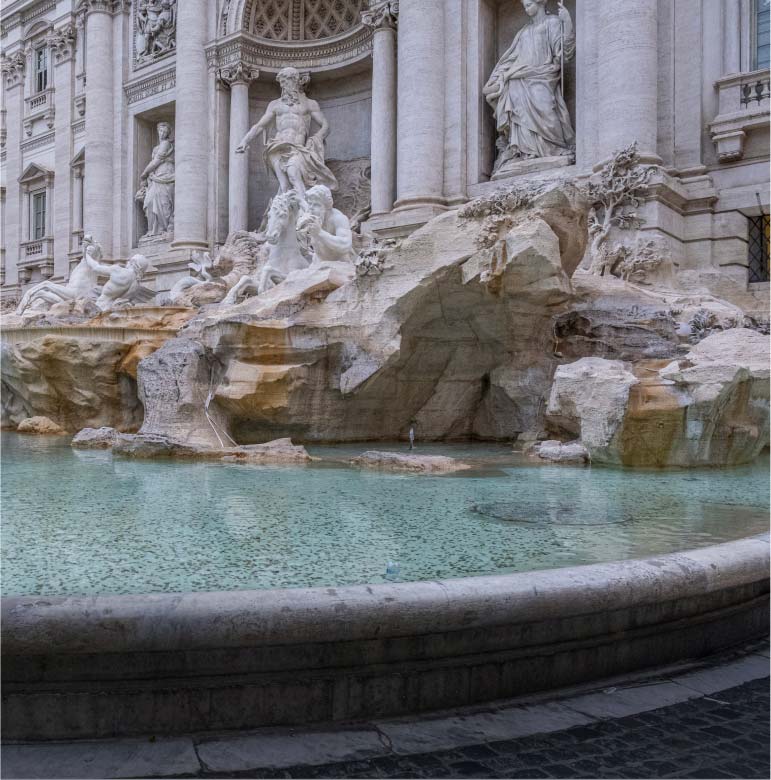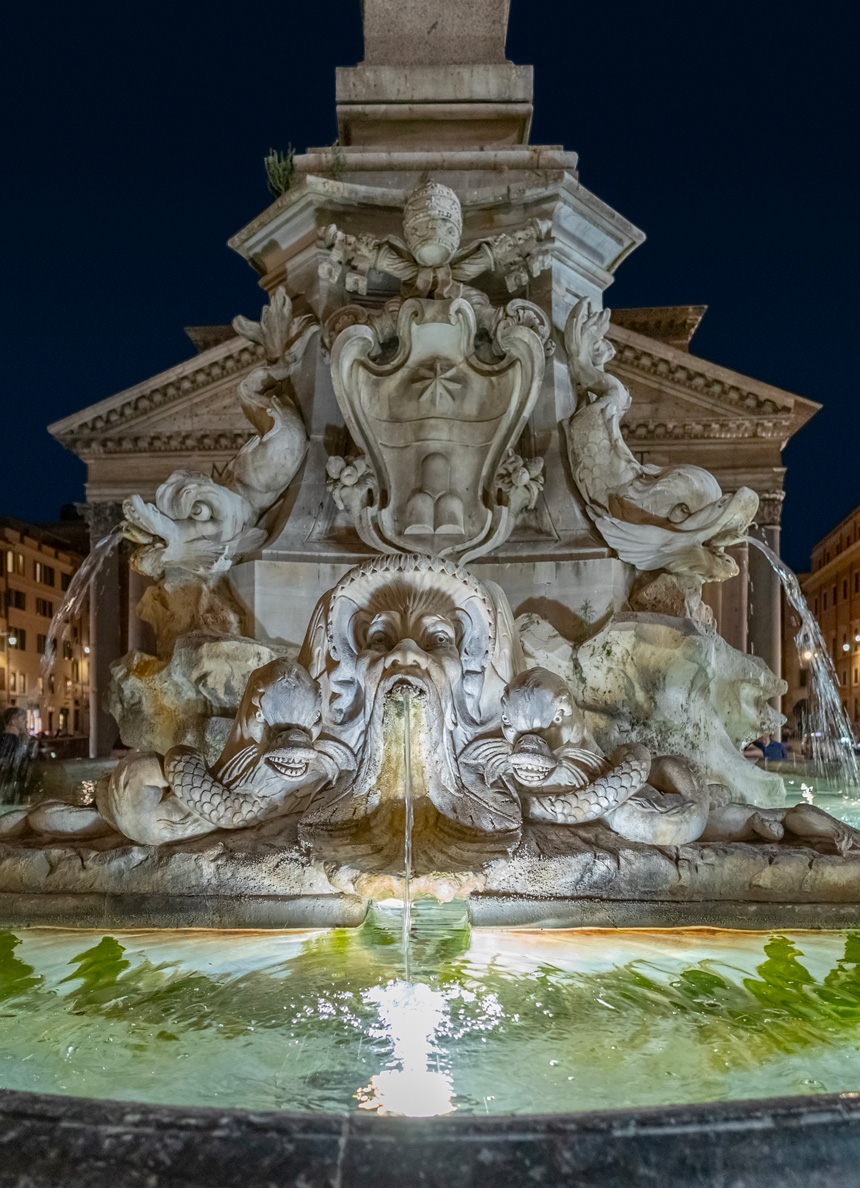
Trevi Fountain
As both works of art and sources of refreshment, Rome’s fountains accompany citizens and tourists throughout every corner of the capital.


The first fountains date back to Ancient Roman times and initially served a purely functional purpose.
Over the years, however, they evolved, and the aqueducts that supplied the city were often directed to a Mostra fountain, a magnificent work of art built to beautify the city and provide access to drinking water.
They were, and still are, elements of great beauty, showcasing the power and grandeur of those who commissioned them, from popes to Rome’s noble families.
Today, Rome has over 3,000 fountains and drinking fountains. In the heart of the historic centre, there are more than 200 nasoni. It is difficult to imagine Rome without its splendid fountains, an invaluable artistic and cultural heritage immortalised in cinematic masterpieces and serving as the backdrop to numerous historical events in the capital.
The most spectacular fountain in Rome, it is the Mostra of the Acqua Vergine. Designed by Nicola Salvi, it was inspired by Bernini.
Created by Bernini in 1651 for Pope Innocent X.
Designed by Giacomo della Porta in 1574 and renovated by Bernini in 1653, the fountain features a central statue of the Triton, traditionally known as the “Moor”.
We upgraded the lighting systems of several historic fountains using LED technology. These interventions included the Acqua Paola Fountain on Via Garibaldi (Gianicolo), the Fountain of Moses in Largo di Santa Susanna, and the Fountain of Naiads in Piazza della Repubblica.
Rome’s Nasoni